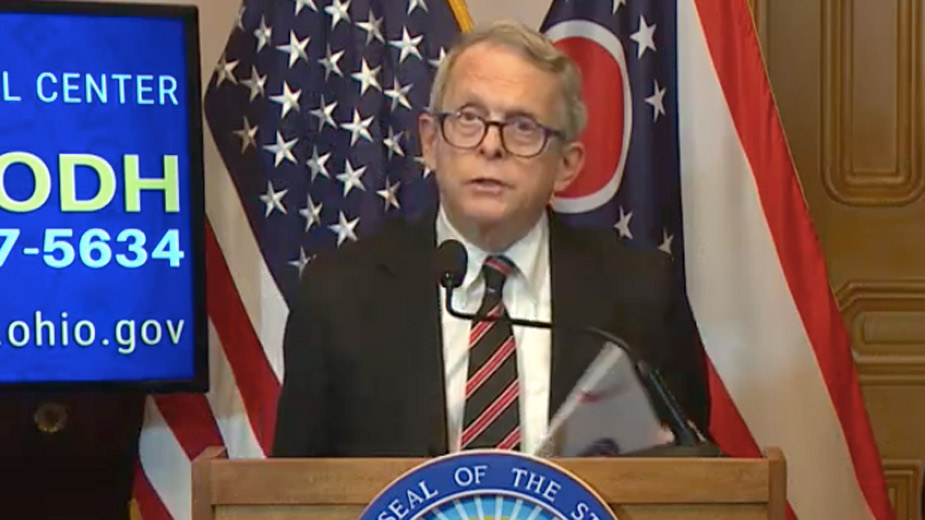Ohio Tally to Include Presumptive Coronavirus Cases
YOUNGSTOWN, Ohio – Ohio will begin reporting presumptive cases of COVID-19 to provide the public a clearer picture of the disease’s spread through the state.
Until now, the state reported only cases that had been diagnosed through testing. Now, in following new guidelines from the Centers for Disease Control, the state will also include the number of cases that include clinical and epidemiological diagnoses.
The presumptive count will include results from quick tests that use antibody tests from fingertip pricks that will soon be available in Ohio, as well as physicians making a diagnosis based on the symptoms a patient is showing and there are no other likely diagnoses, “even if there is no laboratory test,” Gov. Mike DeWine said Friday at his daily press conference.
“Under the old guidelines … those tests would not have been reported if they were positive. You would not have seen those numbers,” he said. “This is evolving. The science is evolving. The way of counting is evolving as well.”
Ohio will report the number of confirmed cases, presumptive cases and total number in its daily updates. With more data available, he said, the state will be better able to make decisions and direct resources.
“What this guidance enables all of us to do is better track who has the virus currently and who had the virus- those who are recovered and no longer a threat in passing it to others,” he said. “This will be vital in tracing the disease and will allow us to isolate it to smaller pockets or areas so we can open things back up. At the same time, it will allow us to target limited resources for a better public health response.”
Dr. Amy Acton, director of the Ohio Department of Health, said Thursday’s case count – 5,512 statewide – would increase 17 under the new guidelines. The numbers will not be retroactively applied much further because of the number of people who are asymptomatic or have gone through their sickness without a formal diagnosis.
“Case definitions by the CDC, which guide how states count cases, has been evolving since the beginning of this disease. It started early one with a case [defined as] someone who traveled from Wuhan province, then it expanded to all of China, then to additional countries” she said. “That definition continues to evolve with the understanding of this disease.”
On Friday, the state reported 5,878 total cases – 5,836 confirmed – with 1,755 hospitalizations and 231 deaths. So far, 58,573 tests have been completed in Ohio and 84 counties are reporting confirmed cases. The state is also now posting its rolling five-day average number of cases and 24-hour change in total cases.
“All of these numbers are a gross underestimation of the amount of disease out there. Most people are mildly symptomatic and up to 25% may be asymptomatic and we have no way of knowing,” she said. “We’re not really testing those folks because there are limited tests. We know these numbers are the tip of the iceberg and we’re seeing more of the tip with the new definition, but until we have full and available testing, we really won’t know.”
Safety measures such as social distancing and the shutdown of nonessential are also having an effect on the spread of the coronavirus. Most estimations, Acton said, put the virus’s rate of transmission at three – one person with COVID-19 can spread it, on average, to three other people if no measures are in place. In Ohio, that number has been cut to 1.21.
To that point, DeWine also had words for those who feel COVID-19 is not as serious as its made out to be.
“When you talk about the modeling, the projections of what might happen, Ohioans changed the outcome. We stayed home, by and large. We stopped school. We did many, many things that are uncomfortable,” he said. “If we had not done that, we’d be in the midst of what you saw in Italy and New York. There’s a reason Ohio’s numbers are better than what we projected and other places.”
Lt. Gov. Jon Husted reported that a second Ohio company, Steris Corp., has been given approval by the Food and Drug Administration to sterilize N-95 respirator masks at a small scale, 10 roughly every half hour. The machines are already on their way to businesses and medical centers throughout the state, he said.
And, following changes by the Federal Highway Administration to temporarily allow commercial activity at rest stops, the Ohio Department of Transportation is offering permits for food trucks to operate at the state’s 86 rest areas along the turnpike. The permit application is available here and is free.
“Our rest areas are certainly not as crowded as they have been in the past,” DeWine said. “It’s important that our truck drivers and essential personnel have access to hot meals as they get food and other essential items to our grocery stores.”
Copyright 2024 The Business Journal, Youngstown, Ohio.



